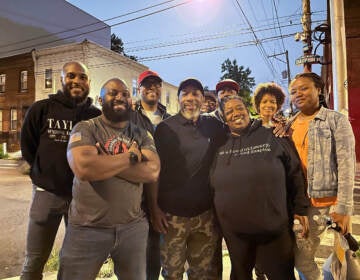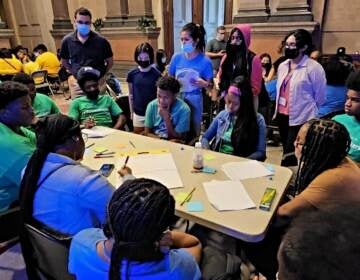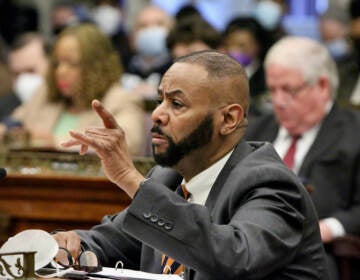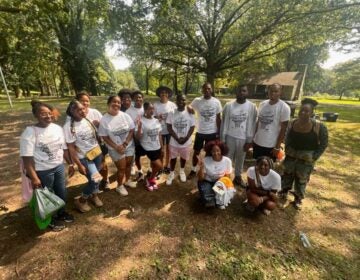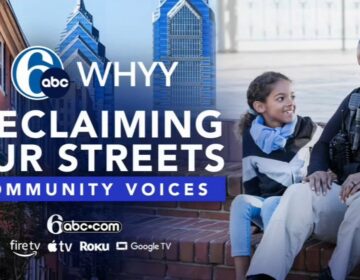‘Faces you need to see’: Loved ones of violence victims share grief in new art exhibit
A new art exhibit at City Hall features gun violence co-victims, or people who’ve lost someone to homicide — stories often lost in the daily homicide count.
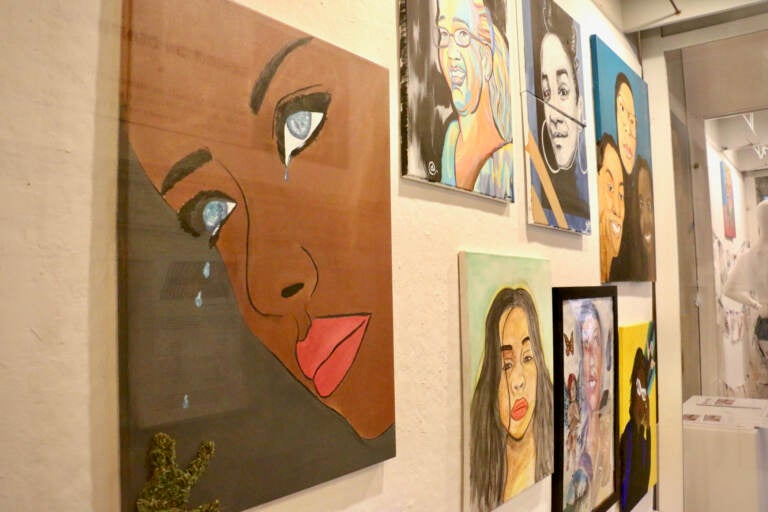
File photo: Portraits of loved ones of shooting victims, called co-victims, are displayed on three floors at Philadelphia City Hall in an exhibit curated by Zarinah Lomax called ''We Are Here: Stories and Expressions of Healing.'' (Emma Lee/WHYY)
For the next two months, the faces of Philadelphia gun violence victims and their families will be on display at City Hall. The “We Are Here: Stories and Expressions of Healing” exhibit lifts up the experiences of people who’ve lost a loved one to gun violence, in hopes of providing support to the grieving and imploring action from city leaders.
Organizer Zarinah Lomax conceived the portrait project, which features 45 co-victims and will be on display until Oct. 15. She lost a family member to gun violence in 2018 and has been working with families affected by trauma since. Lomax is a host with PQ Radio 1, one of WHYY’s N.I.C.E media partners.
“A lot of the time we paint the victims,” she said to a packed room at the exhibit opening. “But these are faces you need to see, these are the victims that are still here.”
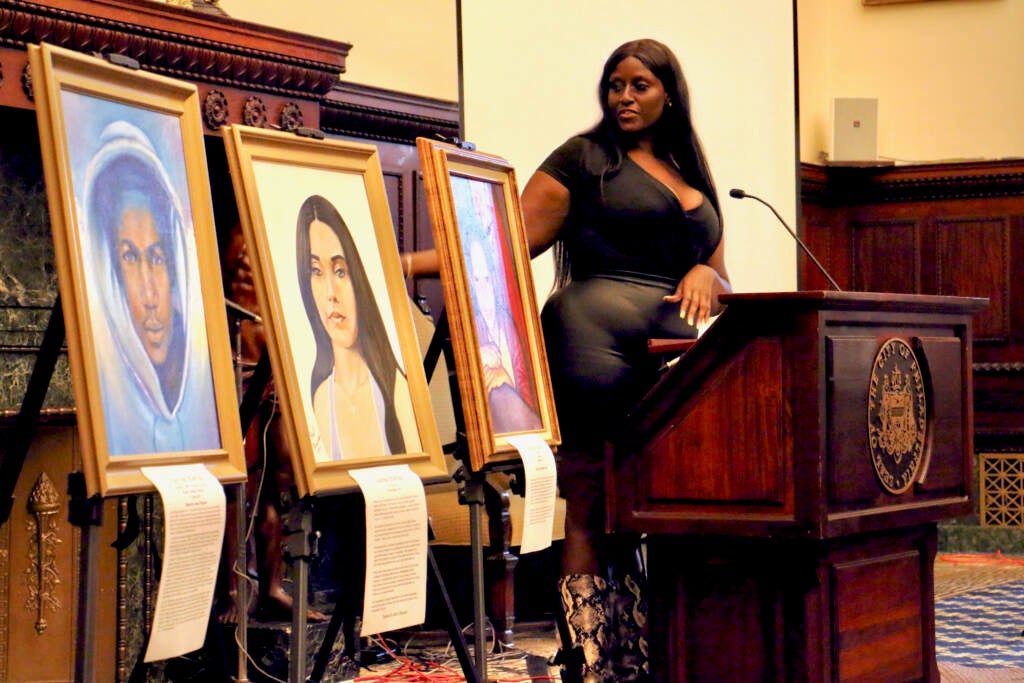
Advocates say the voices of families are often lost in the daily homicide count and policy discussions surrounding Philadelphia’s gun crisis. They point out that a bullet doesn’t just injure one person — it causes a ripple effect that touches someone’s family, friends and neighbors.
Earlier this year the city launched the Office of the Victim Advocate to help meet the needs of families affected by homicide.
“We have always needed someone to stand up for those who are traumatized by what’s going on in our city,” said Adara Combs, who heads the office. “The homicide numbers go up, but those aren’t just numbers — those are people that we will never see again.”
Leaders of victim support groups say it’s hard for loved ones to find resources when they’re in the throes of grief. Lomax recommended the city provide microgrants to families so that they’re able to get by financially after a loss, and that they make mental health services more easily available.
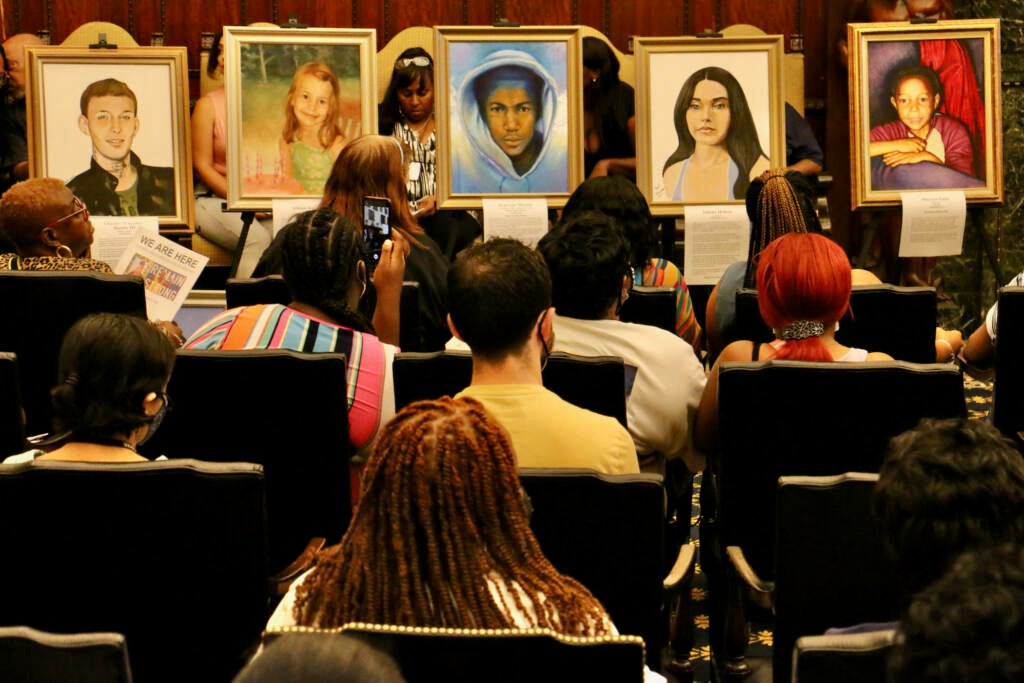
Trauma related to gun violence can cause acute and lasting physical and mental health issues, and exacerbate pre-existing conditions. Speakers at the event openly discussed the pain of sudden loss and the challenge of getting up every day to continue to tell their loved ones’ stories.
Cherisse Pearson lost her teenage son Theodore Crawford, or TJ, to gunfire in April. She also has two five-year-olds.
“This is still very fresh for me … I’m trying to keep composure,” she told the audience, holding her childrens’ hands at the podium. “Every day is extremely difficult, trying to explain to them why their brother’s not coming home.”
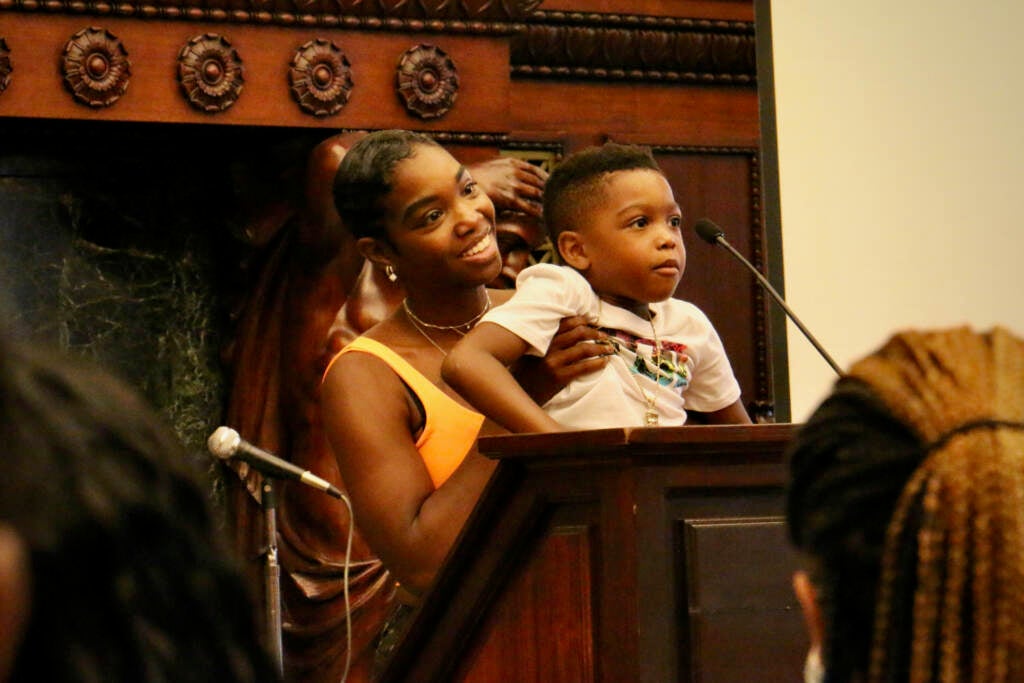
Eddasy McClellan, 28, attended the exhibit opening Thursday to view a portrait of her younger sister, Erica, who was shot in 2017 a few months before her 18th birthday.
“I usually don’t attend things pertaining to my sister, it’s just too much for me,” McClellan said.
She described Erica as “fun,” “lovable,” and “tough.”
“This is my first time coming out to something that has to do with her, and it’s really nice. I love it.”
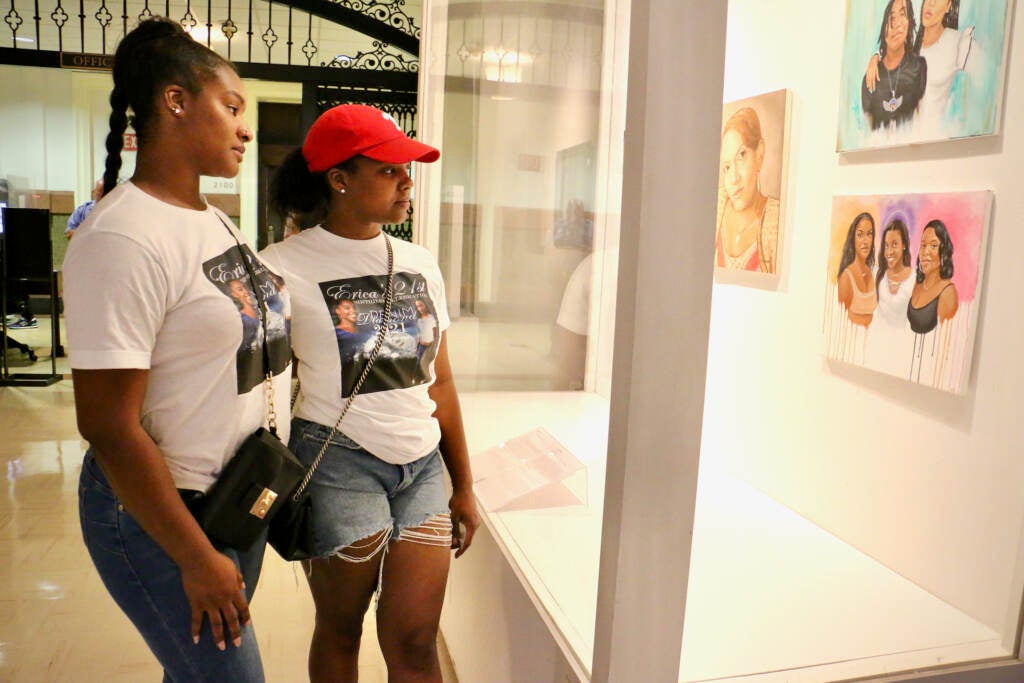
Reverend Leroy H. West, director of a grief support organization called Central Philadelphia Parents of Murdered Children, said he feels elected officials should pay more attention to co-victims. Philadelphia Mayor Jim Kenney came under fire in July for admitting he has not met with the families of this year’s homicide victims. There have been 304 fatal shootings this year.
“When you get a call and somebody’s lost a 7-year-old child, or a 5- or 6-year-old child, the city needs to reach out,” West said. “And that’s just not happening.”
Lomax said she didn’t notify the mayor about the exhibit opening.

Many advocates believe that treating the immediate and long-term trauma caused by gun violence also prevents shootings. A sudden loss, and the frustrating legal investigations that often follow, can cause feelings of depression, hopelessness and anger. When not addressed, homicides tied to disputes can beget further violence.
Lomax said seeing the faces of co-victims and reading their stories, which are displayed on placards alongside the portraits, could change a potential perpetrator’s mind.
“It’s never gonna stop everything,” she said. “But it definitely can make someone think ‘If I do this, this is gonna be the cause and effect and maybe I shouldn’t take someone’s life today.’”

And she had advice for how to support survivors.
“Don’t ask if they’re OK,” Lomax said. “They’re not OK, they’re surviving. Ask if you can be a resource. …When you see them, help them, hug them, love them. Buy their books, go to their community events.”
The new exhibit was a collaboration between Lomax’s nonprofit, The Apologues, the city’s Office of Arts, Culture and the Creative Economy, The Philadelphia Obituary Project and several other groups. There is also a new garden in West Philadelphia to support those grieving loved ones lost to violence.
If you or someone you know has been affected by gun violence in Philadelphia, you can find grief support and resources here.
WHYY is your source for fact-based, in-depth journalism and information. As a nonprofit organization, we rely on financial support from readers like you. Please give today.


